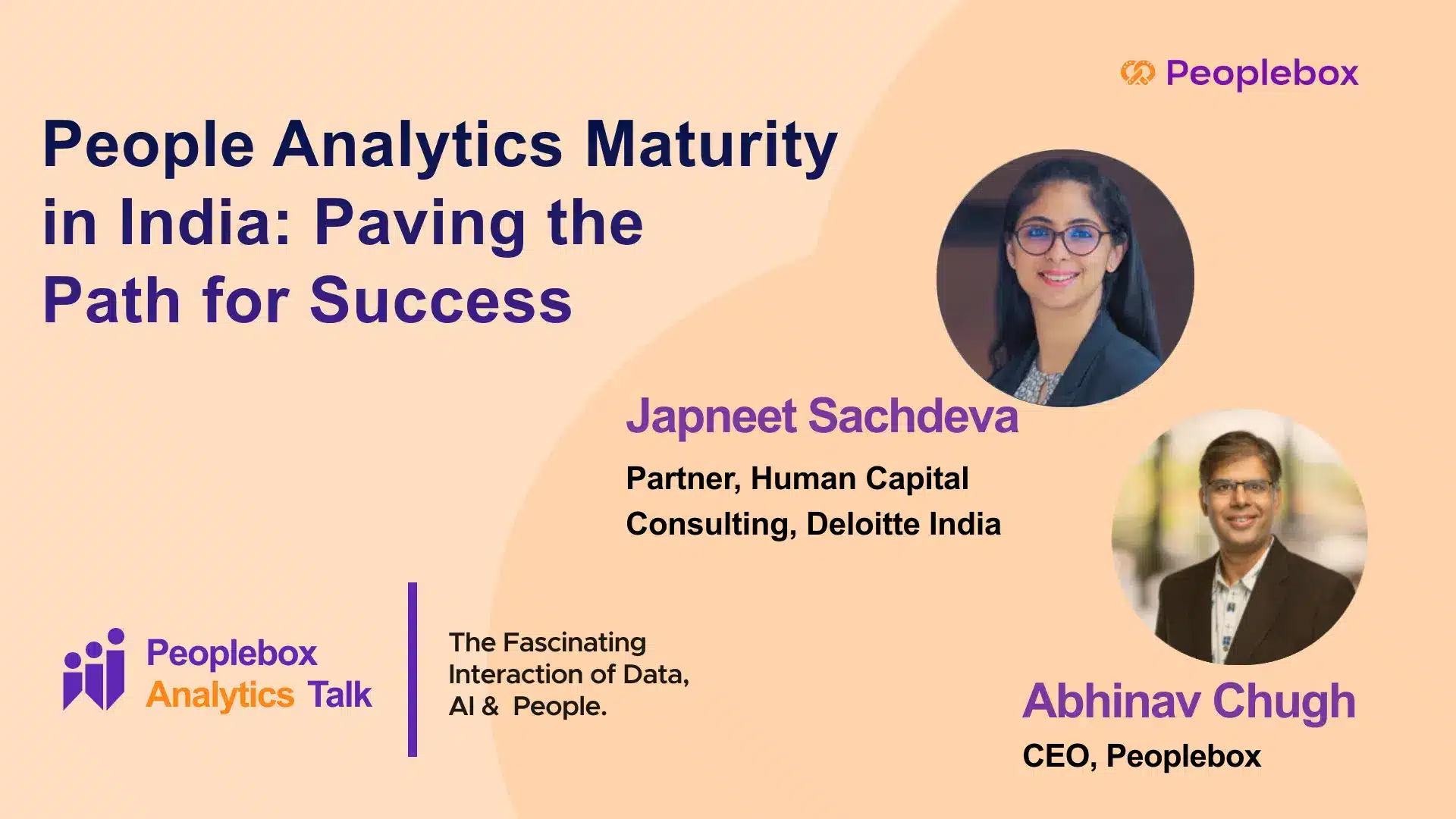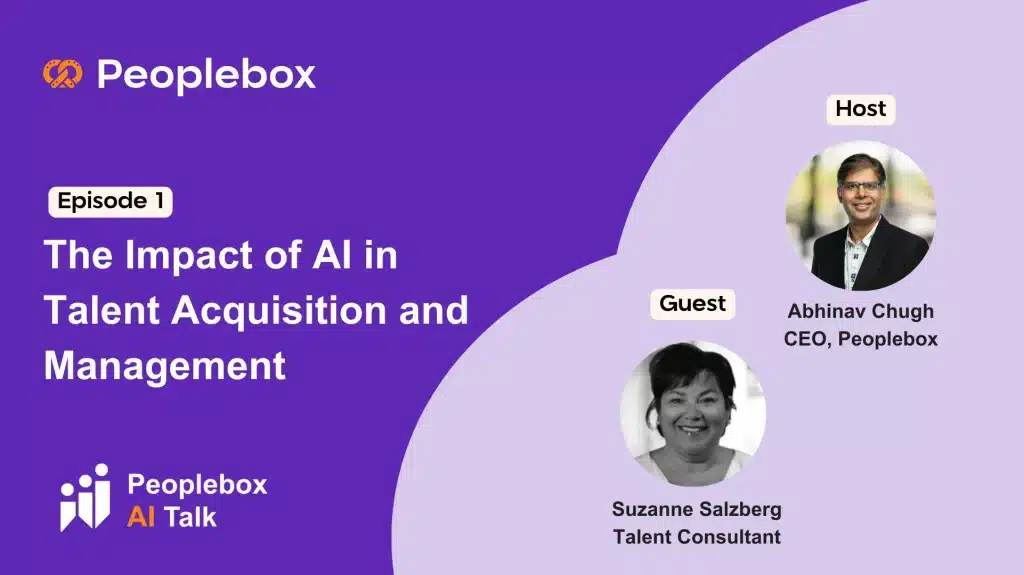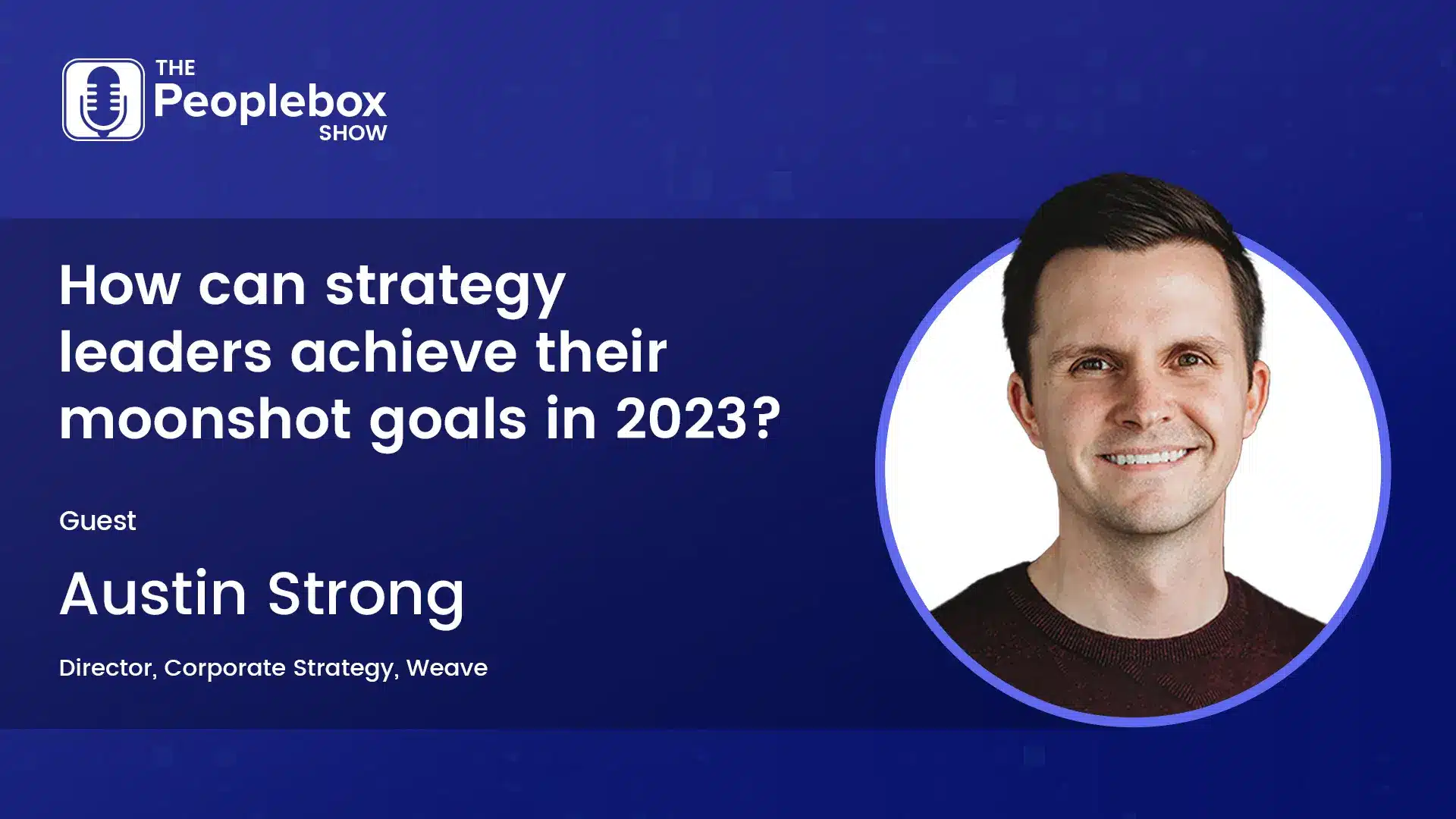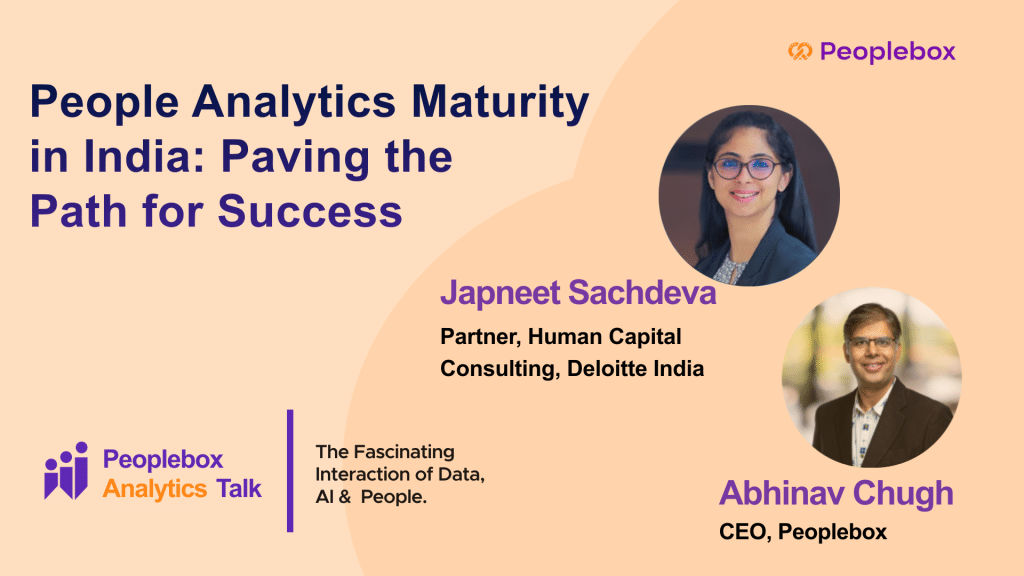Summary
In this conversation, Abhinav and Dan Lapporte discuss the intersection of data, AI, and people in the field of People Analytics. Dan shares his journey in people analytics, starting at Charles Schwab, and emphasizes the importance of connecting HR data to business impact. They discuss the evolution of people analytics over the years and its increasing ubiquity in organizations. Dan highlights the need for HR to be more data-driven and the challenges in bridging the gap between HR and other departments. They also explore the role of AI in people analytics and the potential for democratizing data and information. Finally, they debunk myths about people analytics, such as the need to be an expert data analyst and the belief that people data and business data should work in silos.
Key Takeaways
- Connecting HR data to business impact is crucial in people analytics.
- People analytics has become more ubiquitous and is expected to deliver insights and value.
- HR needs to be more data-driven and bridge the gap with other departments.
- AI can democratize data and provide natural language processing for easier access to insights.
- People analytics can elevate top performers and help businesses succeed with all employees.
- People data is business data and should not work in silos.
- Data does not need to be perfect to start with people analytics.
Full Transcript
Abhinav (00:02)
Often when we talk about People Analytics, it’s always about HR metrics, like headcount, attrition, or hiring. But how do these numbers actually connect to real business impact? What happens when we mix people and business analytics? And most importantly, how can we use this combo to help everyone in the company aim higher and reach bigger goals? Hi everyone, I’m Abhinav, and welcome to the Peoplebox Analytics Talk.
where we invite remarkable leaders to go deep into the fascinating intersection of data, AI and people. And today, I am thrilled to introduce Dan Lapporte. Dan has an impressive wealth of experience in people analytics, spending nearly two decades. His journey began at Charles Schwab, way back when people analytics went by the name of HR reporting. Over the years, he lent his experience to Fortune 500 companies like Chevron,
and Kaiser Permanente, and now heads people analytics at Lucid Motors, the luxury electric car giant based in Northern California. Welcome to the show, Dan.
Dan Lapporte (01:09)
Thank you, Abhinav Nice to be here.
Abhinav (01:11)
Dan, your journey in people analytics started by connecting HR data to business impact at Charles Schwab almost two decades ago. Could you share that story and why this piece is still so crucial?
Dan Lapporte (01:23)
Absolutely. When I was at Schwab, there was something of a war for talent among the brokerage companies, you know, Fidelity and Wells Fargo, there was something of a revolving door. And what I found is that when Charles Schwab lost top performers, we lost revenue, we lost income, we really struggled particularly if those employees went to a competitor. And so I began reporting on
top performer turnover, not just turnover, but top performer turnover. And I sent these reports out and they were just, you know, based in Excel. And one day out of the blue, I got a call from the CFO and the CFO said to me, you have my attention because it was so impactful when we lost those good people, those people who are bringing revenue or new assets to the organization.
And I just vividly remember it being a very powerful moment in my people analytics journey.
Abhinav (02:24)
Fantastic. And then that’s how a very, very impressive journey started.
And how is it different today, Dan? You know, it’s been almost 20 years with so many different companies, most of them Fortune 500. Today, when we look at the people analytics in the post-COVID world, is this any different?
Dan Lapporte (02:45)
It’s different because I think people analytics has become more of a thing. It’s ubiquitous. I think every organization either is thinking about or has a people analytics function and the expectation is that you are going to deliver insights and value. It’s no longer just about providing data. It’s about telling the story with data. So my example, a moment ago with
with Schwab is now table stakes. I think everybody should be reporting on attrition across performance levels.
Abhinav (03:24)
And in your experience, what’s really driving this shift? Why has it suddenly become so crucial and every company is actually looking at insights and not just tables and dashboards.
Dan Lapporte (03:35)
Yeah, Well, People are one of the most important or expensive items on the balance sheet. And businesses are typically in business to make money. I suppose if you’re a nonprofit, you’re not there to make money. But when you are able to convince people that, you know, our workforce is an incredibly expensive commodity or asset, and we’re not doing a very good job managing that asset.
people tend to sit up and take notice. And The analogy I like to use Abhinav is most companies have a better sense of how much money they’re spending on office furniture than they do on their people when you start to turn in, you know, include things like the cost of replacement or talent acquisition costs. Most businesses think of those as baked in costs, but they’re controllable and they’re manageable and they’re measurable.
Abhinav (04:33)
Could you walk us through a typical day or week in your role? As the head of people analytics at Lucid or in your previous companies
Dan Lapporte (04:42)
Sure, I would say my day is really mixed of three things. One is responding still to ad hoc requests. There’s always gonna be a need for a hiring rate or a turnover rate or maybe it’s around succession management. The second part is really strategically trying to engage with leaders, so taking the people function to the business and helping them understand what I mentioned before
about what cost people are and how they can perhaps run their business more efficiently with the right people and the right place, the right time at the right cost. And then the last piece of it is, you know, once you build a people analytics practice, it’s a matter of delivering on what you said you want to deliver. So that’s kind of the work of the work. If you’re going to be looking at attrition trends by, you know, gender.
it’s important to be able to provide kind of regular routine updates to people and what they might consider doing about things if they’re crossing some threshold that they’re concerned about. So those are the three areas I think people analytics plays in.
Abhinav (05:59)
And Dan, I’m sure in all these years that you have been into people analytics, some of the things might not have changed. For example, even two decades ago, the importance of attrition would be as high or at least would be critical as it is today. But walk us through, in these past 20 years, did you notice a shift in the type of people analytics projects that you tackled?
Dan Lapporte (06:24)
Absolutely. When I first started, it was miraculous to be able to calculate an attrition rate and provide some interpretation. Now there are AI chat bots or benchmarks that you can bring in and be able to give business leaders a sense of what does good look like? If our attrition rate is 15%, how does that compare to the industry? How does that compare to other functions within my business?
So it’s changed a lot and it’s become much more sophisticated and probably more valuable.
Abhinav (06:59)
It’s so interesting that you spoke about AI. You know, the world is like suddenly changing. It’s such a huge speed with the advent of AI. When it comes to people analytics, how do you see the best use of AI?
Dan Lapporte (07:15)
I think this idea of business leaders or HR business partners or any HR practitioner being able to ask natural language questions to a machine, right? This computer, what’s my current head count? How did my head count change year over year? Which organization is growing fastest within my business? Those sorts of basic business questions.
which typically come in over email and then you spin up an analysis and you send it off, can now be done automatically. And I would add, I think we’re kind of in the infancy there of bringing AI into people analytics. I think it’s gonna continue to grow and it’s a trend I’m actually looking forward to.
Abhinav (08:01)
Fantastic, we too, I think it’s a huge opportunity for companies like us to, you know, provide this power of analytics and insights in the hands of every manager, every leader, not just from people’s side, but also on the business side. And on that note, Dan, every time I speak with a leader or an HR head, everyone agrees that people inside should be aligned to business outcome. Yet, very few companies have been able to achieve that. You know?
And many people wonder that what are the specific challenges that companies face or especially you have faced in your journey to achieve this alignment.
Dan Lapporte (08:44)
People data is business data. The same way we need to account for people costs in our business, people data really needs to get up to the right hands. And a good specific example of that is when I worked at Schwab, it was right at the very beginning of the pandemic. And people were very concerned about frontline health care workers being unable to work.
And so one of the more interesting people analytics case studies was in concert with, you know, clinical practitioners and lots of different areas of the business look at how can we replace those people? You know, we’re not gonna be able to hire them because nobody’s gonna wanna be a respiratory therapist when you’re in the middle of a respiratory borne pandemic. But.
what we ended up doing was looking at different licensing requirements and then figure out if scenario A happens where we lose a lot of frontline employees, where can we find people who can still perform those roles within license and be able to meet patient needs? And again, I could talk for an entire podcast about what that effort involved, but that’s a good example of where data needed by the business.
was supported by employee information and people analytics.
Abhinav (10:08)
That’s actually a very interesting example. And I wonder that despite these amazing success stories, the first sort of destination for most of the business leaders to get any actionable insights is not people analytics. They go to their business analysts or the data analysts to try and find it. And most of the times that we have seen, the people data is not part of that. So I’m curious that…
There are many head of people analytics or head of people who always wonder that how do we bridge this gap between HR and other departments and how do we make business leaders excited about the people data and the actual impact of that on their business metrics as well.
Dan Lapporte (10:54)
Historically, when business KPIs became available, they were true business KPIs. They really were not related to people. And now you can’t find a business that isn’t looking at people metrics and people analytics. So it might be top performer attrition, it might be overall turnover rate, it might even be, you know, DEI metrics.
that are most important to a business. But that’s a way where the practice has matured, and as the practice has matured, it’s gotten me more visibility in regular business reporting.
Abhinav (11:27)
Interesting. And then in your experience, right, you have seen this in a large span of time. Do you see that HR is becoming more data driven today or is it almost always driven by the top, you know, who requires more people data and connected to the business data?
Dan Lapporte (11:46)
Ooh, that is a sticky question. So let me try to answer it with some political correctness. I think HR business partners are now expected by their leader or by their client groups to have some knowledge other than gut feel about talent. And I think HR business partners, hopefully I’m not offending my friends by saying we’ve sort of been dragged along as
data-driven decision-making has become more important across businesses, HR has been along through the journey. I will add that it’s not a natural talent for the HR function, and that’s why these tools, Peoplebox and others, are so important for organizations to invest in.
Because if you’re going to continue using technology from the 80s and 90s like Excel to try to generate decisions about people, you’re going to get into trouble very quickly. The questions will outpace the technology.
Abhinav (13:01)
Fantastic. And as the demand of both data as well as people analysts or the role of people analytics are becoming more and more in the companies, what skill and expertise do you believe, Dan, will be most valuable for the future people analytics professional in making sure that they are able to provide the right data and actionable insights to the business leader?
Dan Lapporte (13:29)
That’s a good question. And I think it’s a combination of sort of HR skills and knowing what matters about organizations and organizational design and business acumen. So I think the best people analytics practitioners probably come from other areas of the business. I didn’t start out like my career journey in human resources. In fact, 25 years ago, if you told me I was gonna be in HR, I would have chuckled. But.
I fell in love with the work because there’s such a power in being able to say, you know, all businesses talk about people as their most important asset. Well, then start treating it as an asset and effectively manage it and effectively understand it. And again, People Analytics is the pathway for that.
Abhinav (14:22)
Fantastic. And Any steps that you would recommend, Dan, for companies aiming to foster a really data-driven culture within their HR and the broader organization.
Dan Lapporte (14:38)
I have two or three that I think are vitally important. Number one, the messaging has to come from the top down. So if your Chief People Officer or VP of HR believes in data and being data driven, they need to reinforce that message so that the HR function follows their lead. I think the second one is, you know,
The only way to have a strong people analytics function is to guess what, invest in the people analytics function. So if you have an expectation of hiring someone and, you know, they’ll just jockey their way through Microsoft Excel or, or maybe Power BI even, and come up with their own formulas, that’s not a winning strategy. And then I think the third is being intensely focused on business problems. So when you’re coming up with.
people analytics metrics, focus on what it is the business is looking for. Is your business focused on growth? Is your business focused on controlling costs? Is your business focused on expansion? Maybe global expansion or something like that. And people analytics really does play a role in all of those things.
Abhinav (15:48)
Peace.
And it’s so interesting you said that I always start with a business objective. That’s exactly what we do when we help companies with OKRs. And one of the questions that I’m often asked is where to start?
Dan Lapporte (16:07)
I would say hiring a strong leader to make sure that you can sort of build a roadmap and a team. It’s not, you know, flipping a switch and you’ve got a people analytics function. You have to kind of grow from the ground up. If I was going to make a real recommendation, it would be look for someone who’s a star in finance or maybe a star in your business and help them.
to understand the importance of people and ask them to maybe take on as a stretch assignment, hey, we want you to develop this capability for us. And then, you know, that person doesn’t have to stay in that role forever, but getting a strong head start is vital.
Abhinav (16:54)
Very curious to know, Dan, in your long career and people analytics, what has been the most sort of mind-breaking or wow insight that you were able to provide
Dan Lapporte (17:10)
Yeah, that’s a really good question. And I’m going to go back to some of my work at Kaiser Permanente, which for people watching this internationally, or maybe outside of California for that matter, is one of the largest healthcare organizations in this country in the United States with more than 12 or 13 million members and a quarter of a million employees. And the question was,
Is there any correlation between what’s happening with our people and with Kaiser, it was specifically nurse managers. Is there any correlation with them leaving or their performance or maybe how they’re feeling about their job and patient outcomes? So we looked at business data from the quality side of the organization where we had hospital re-admittances or maybe even hospital
quality scores for patient satisfaction metrics, and then looked at nurse manager turnover. Because we know that when you have a lot of turnover in management, the employees under those managers tend to question, you know, well, why am I still here? My manager left or, you know, my manager moved on. Where’s my motivation? And we did that study and we… It wasn’t conclusive, I’ll be honest. But…
That’s the sort of thing where you can take very real business data, hospital quality scores, which lead to Medicare or Medicaid reimbursement rates, and people data, and marry the two together and see if you can find correlations. It’s fascinating work, actually.
Abhinav (18:57)
Fantastic. That’s fantastic.
Coming back to the wish on AI, Dan, you have seen now the introduction of AI and its capabilities.
How would you really like AI to transform the people analytics space?
Dan Lapporte (19:13)
I think bringing AI to the forefront of people analytics is really all about democratizing data and democratizing information. So if you build an AI model where security is in place, of course, because you’re dealing with sensitive data, but you give leaders the ability to simply ask a question or type a question and get an answer, that aspect of AI, that sort of natural language processing and…
machine learning and all those other components of AI, I think really will bring a sea change to how workforce data is democratized into business data.
Abhinav (19:54)
Fantastic. We now move to the last section of our podcast, which is my favorite, which is breaking the myths on people analytics. So I would share a myth, and I would love to hear your response on that. So the myth number one that we hear very often, you need to be an expert data analyst to use people analytics in a company.
Dan Lapporte (20:18)
I think what you really need is good cross-functional connections. You need connections with IT, you need connections with obviously HR, you need connections with the business. And if you know the right questions to ask, you can certainly find people or tools to build the answers for those questions.
Abhinav (20:39)
I couldn’t agree more. Myth number two, people analytics reduces people just to their data.
Dan Lapporte (20:47)
debunked. I think people analytics can elevate top performers. I think people analytics can help businesses succeed with all of their employees. So I think people analytics opens doors not close them.
Abhinav (21:05)
Fantastic. And the myth number three is that people data and business data need to be working silo. They don’t really need to be connected to bring an image.
Dan Lapporte (21:16)
Debunked. People data is business data. Again, I hate to sound like a broken record on this, Abhinav but most organizations spend a lot of money on their people between salaries and benefits and occupancy and provisioning. But we don’t do a very good job managing that resource. And I think the secret to…
for lack of a better word, selling a people analytics capability for a business is making that case and being able to present that business case. And there are lots of different ways to do it.
Abhinav (21:58)
And the last myth, which is we often hear, and it’s probably also one of the biggest blocker, is to start people analytics, data must be perfect.
Dan Lapporte (22:10)
No, you should never let the perfect get in the way of the good. So it would be nice for all HR data to be of the highest quality and the same as financial data, which requires reporting and monthly closes have to be exactly right. But it’s not. People are messy and therefore people data is messy. And to make a good decision, you don’t really need
The details, what you need is the trends and the interpretation.
Abhinav (22:45)
Thank you so much, Dan, for talking with me and for the incredible insights. You are one of the most experienced person I have spoken with when it comes to people analytics. The work that you have done in connecting people insights to the business impact is truly inspiring. Keep up the great work to make companies more data-driven and…
people-oriented. Have a great day and thank you so much, again
Dan Lapporte (23:09)
My pleasure






